



Featured image: Image from the exhibition: http://gl1tch.us/GlitchArt-wit-jonCates.html
jonCates upcoming keynote, along with the entire Art of the Networked Practice online symposium, March 31 – April 2, 2015, will be free, open and accessible via web-conference from anywhere in the world. Visit the Website to register. The symposium is in collaboration with Furtherfield.
jonCates in Conversation With Randall Packer
we need to humanize ourselves + our systems, to recognize that we are amidst failed futures, broken tools + glitched environments made from media, mediums, mediations + filtered through failures. – jonCates

Describing the world of new media/glitch artist jonCates is a labyrinthine task. You might begin with his spontaneous and inventive word-language actions reminiscent of William Burroughs cut-ups; or the hypnotic .gif animations made from seemingly incongruous, discarded fragments of media; or perhaps his “dirty new media” aesthetic that brings to the surface the aberrations and raw imperfections that are typically verboten in “high-end” digital circles.
jonCates has ironically and quite cleverly co-mingled punk and pirate media with thoughtful theoretical discourses. Based in Chicago, he is Chair of Film, Video, New Media and Animation at the School of the Art Institute of Chicago by day, prowling the sub-culture of the alternative spaces by night. Cates is at the center of a glitch scene in Chicago, now referred to as the “birthplace of dirty new media,” a movement he has in large part catalyzed: spawning the international GLI.TC/H Festivals and other assorted hactivist events and DIY workshops.
In my conversation with jonCates we discuss his unique synthesis of language and media, his critique of technology, and how glitch, in all of its multifarious manifestations, has powered his work, functioning as a force for uniting artists, students, and communities in collective activity.

Randall Packer: I want to start off with the way in which you blend everything – in your life, in your work, your practice, theory, communications, writing, teaching –there is a mélange of language, a spirit and playfulness, that all seems to flow together with glitch. Would you say that glitch is a way of life?
jonCates: yeas, in faxxx, well first off, i would like to say thnxxx for giving the work the level of attn you have. i think that my approach to Digital Arts or New Media Art is 01 that takes a systemsapproach, not in a kind of cold cybernetic way but in a more wholistic sense of systems, those systems might be broken, they might be glitched, + they might be imperfect + noisy, + that might be what attracts us or me to those systems. but still they are functional or rather functioning in one way or another systematically. so they are connected to one another as assemblages.

RP: I would say that glitch is a language, spoken by its practitioners, who have co-mingled code with the spoken word, or maybe I should say specific to your work, mixing machine language with human language: accepting the aberration as perhaps more important than the message. Is the aberration the message?
jC: i would def’ly say that there is a poetic embrace of noise && error. my interests are also, continue to be, motivated by the connections between Noise Musics + experimental New Media Art. for me this approach to noise or noisiness, or dirt, or dirtiness, is a way to foreground as you say, an aberrance or perversion of normative msg or what we might perceive to be logical reasoning. b/c there is a poetics to that obviously. ppl who inspired me most directly in that manner would be Netochka Nezvanova, who did this comingling of functional code w/ highly politicized + poetic language.
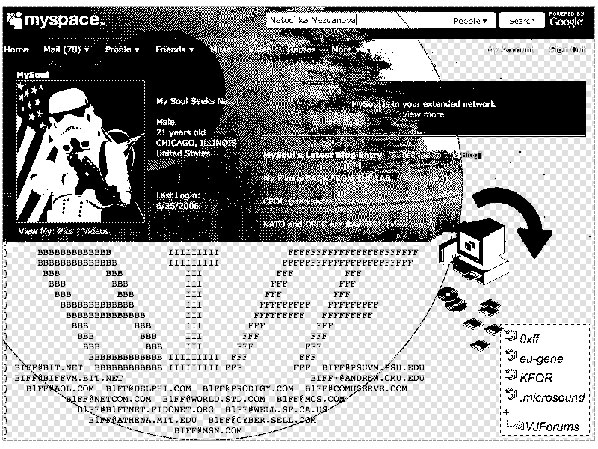
RP: So is glitch an act of undermining the status quo of our relationship to technology?
jC: it certainly can be. i think that there was mayhaps a time recently in witch glitch works were more directly mobilizing that kind of critical stance. but glitch is also folded into aesthetics that are also highly popular so there’s a popularity to the glitch aesthetic which would undermine an argument for saying it is exclusively resistant or exclusively political. it’s just impure.
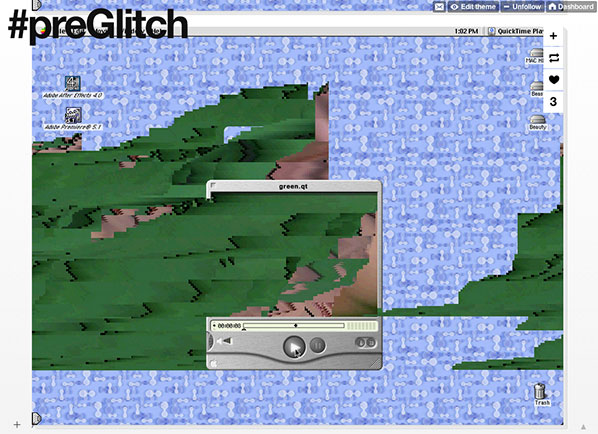
RP: I see many resonances with avant-garde figures both in art and in technology, such as Dick Higgins, for example, in his concept of intermedia. The idea of closing the gap between art and life, media and things, and in your case between language and machine language, art and theory, or as Dick Higgins might have said: art and everything else.
jC: the discourse on art/life, on performance, performance art, those were topics i studied when I was younger: thinking about how technologies that we use are all social. they’re techno-social. we live inna techno-social culture. these technologies are also socially performed, + that means that there are these performative aspects. for instance there is a corporate performance of cleanliness + purity. + then there is the performance of everyday life that we’re all doing all the time w/ all of our technologies. so, we’re making them human, in the sense that we are making them part of our lives.
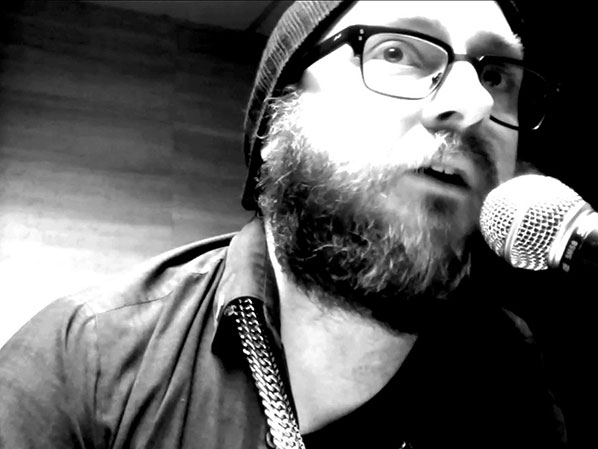
RP: In regards to your idea of “dirty new media,” my response is that the dirtiness implies there is a human quality in new media, that it is not perfect, it’s not sterile, it’s not removed from real life, but it contains its imperfections, it’s impurities, in a way, it’s organic qualities, that get closer to our “wet” lives, rather than our binary ones.
jC: abs’ly! that’s abs’ly a part of the goal in terms of using this term, Dirty New Media OR d1Ɍ+y̶ ̶N̶3WWW_M3DI∆, to foreground all those faxxx. but also that there is a non-neutrality of techno-social artifacts + contexts, that our technologies are not neutral, also that they are embedded, they are part of our lives, + that embeddedness has the word bed in there, we are in bed w/ them also, so they’re embedded in ways that are complex. they are not sterile, they’re imperfect, they are not clean, b/c they exist in the world, which is also imperfect. + so, i do believe that d1Ɍ+y̶ ̶N̶3WWW_M3DI∆ as a way of lyfe + as an approach to artmaking is a way of foregrounding these faxxx, these realities, of our lived exxxperiences, + acknowledging how situated we all are w/ all of these systems, + artifacts that we have made, unmade && remade together.

RP: A lot of people at first glance might look at your work and think that it has been completely usurped by machine language, by a kind of technological sensibility. And so, I am wondering in view of this convergence between human language and machine language the question then might become: where does the machine end and the artist begin.
jC: that’s a gr8 question… well, the machine world is machined by us out of the world + we have literally machined the world. it’s our world, in the sense that we have crafted it. + we’re constantly uncrafting && re-crafting it. it produces errors, mistakes, breakdowns, glitches, noise, + from a Computer Science perspective, what you would want to do would be debugging + refining. but from a d1Ɍ+y̶ ̶N̶3WWW_M3DI∆ perspective, what you might want to be doing is “rebugging,” && pushing different aspects of the machinewwwhirlds to see their thresholds, exxxperiment, + play.
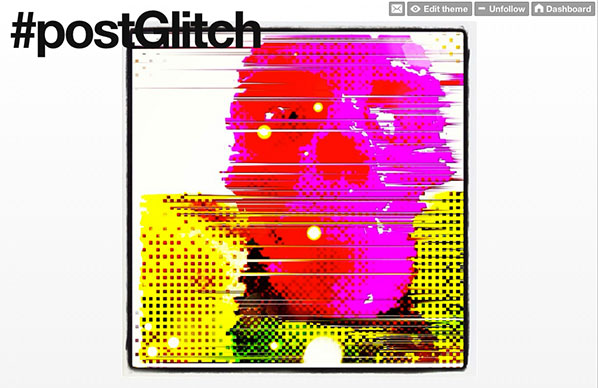
RP: Ultimately there is a playfulness that I think undermines the dystopic view that we sometimes have towards technology. jC: i rly hope that is the case. that’s constantly a goal that i am working on. there are those in my immediate community, + in Glitch Art communities in general, who i am also responding to, who are in fact dystopic, && who are also Discordians, + who are intentionally exploring Chaos Majik or who have aspirations to Kaos Magick, + those kinds of Discordian approaches. && that’s not my intent.
RP: I like the way that you counter the dystopic questions that you get, with an even greater barrage of glitch. For example, there is a comment that Sterling Crispin made when he said: “the glitch/noise fetish is an inversion of humanity & symbolic embrace of death & rampant infectious nihilism.” OK… And your response was:
“thnxxx @sterlingcrispin, my work is an axxxual process of: #glitch #fetish #noise #dirty #newmedia from a #humanist #perspective.”
jC: (laughs) yea, i thought that was funny. i took his comment vry srsly && vry pointedly + it motivated me to write an essay, which is up on the GL1TCH.US Unstable Book for Unstable Media that i am constantly working on. he uses keywords that i am connected to + that have motivated me. he was using fetish, but he was using it in a negatively valenced way + i wanted to reclaim fetish && say, yea, of course fetish is part of what i do b/c fetish is punk + its part of “originary” punk from the SEX shop run by Malcolm McLaren + Vivian Westwood. so, yea, of course, fetish is in my work, but its in this way that’s consistent w/ my art/life inna way that’s dirty, in the sense of being impure, but also (hopefully) sexxxy && exxxciting!
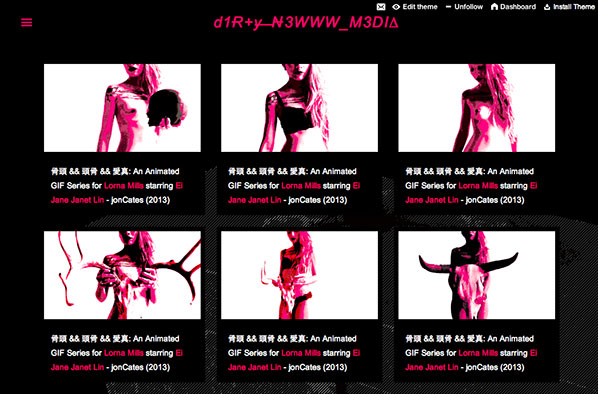
RP: Maybe counter to the world that we live in today with our corporate environment, in which the technology companies encourage a fetish with the slick, clean design of technology. What you have done, is through the construction of a language and a world that you have created, you’ve attempted to break that down and show us what our relationship to technology could be and perhaps should be.
jC: thnxYou! abs’ly! + openUp possibilities, potentialities for ppl, as well as for myself, but also for a community that can mobilize around these approaches, these ideas. it’s counter-intuitive to the rampant, hyper-individualism that lays waste to so much effort that emerges from group practices, communities, to shared or Open Source cultures. this idea of building community, building tools + systems, && sharing those tools + systems w/in the community so that the community can org around all of that + then share work && work goes back out into the communities, to keep it alive. i think i just sketched out a pedagogy! 🙂
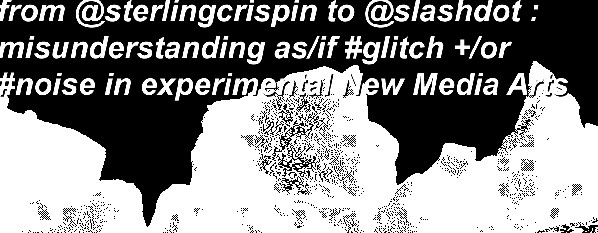
RP: It’s a wonder to me how you balance your personal, artistic and academic life.
jC: it’s a healthy friction for me, it gives me inspiration to work outside of the institution, to work in bars, clubs, DIY/DIT spaces, alternative spaces, it’s a good, healthy dynamic for me. in glitch communities there’s a lot of sharing of technique, + a lot of open sourcing or at least sharing of approaches + practices. so that can have the effect of people learning to reproduce certain styles, or certain aesthetics. but a way to not be stuck on repetition is to focus on glitch as a form of surprise + as a way of glitching ppl’s exxxpectations.

jonCates has several current projects, including the online publication of “Dirty New Media: Hyperthreaded @ GLI.TC/H 2012” by jonCates and Shawne Michaelain Holloway (2014). For more information, visit his Website.